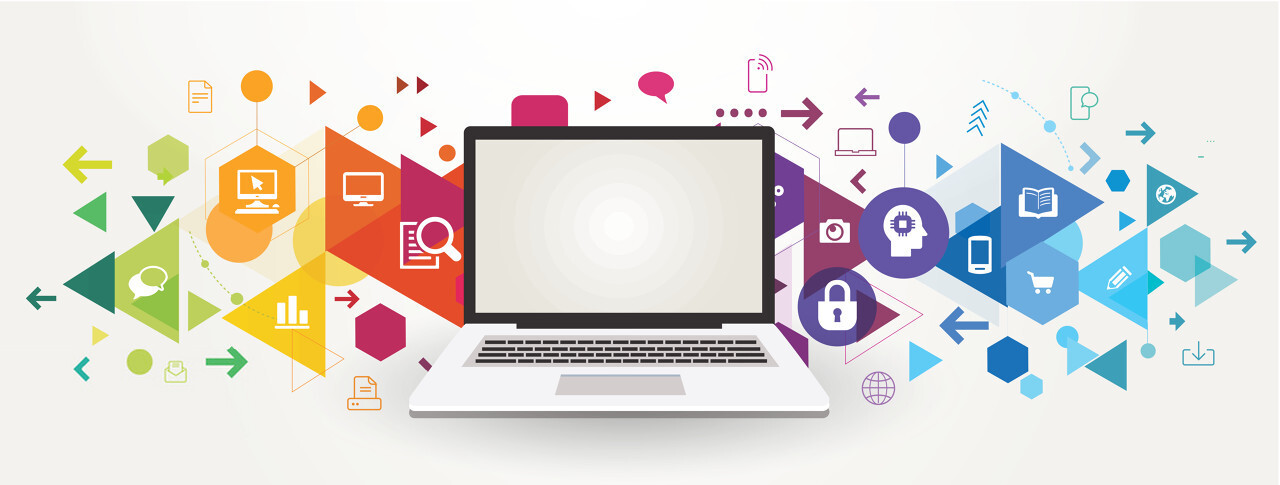With the wave of corona, the technological landscape has changed radically. People and their needs form the base of any change in the world. These required variations are the driving force behind the development of any new technology.
Seldom in The past have we seen such circumstances that have shaken the world to the extent that 2020 has done. So, the top ten technologies that have survived in this situation and have met our requirements are:
Top 10 Technologies Revolutionizing the Post-COVID World
1. Artificial Intelligence:
AI is top on the list. Artificial intelligence is about applying programmed algorithms that automate human resources processes. It’s an emerging technology, and its implementation enables and increases the performance and reliability of the tasks performed while delivering a complete return on investments. Some of its applications are medical diagnosis, search engines, online assistants, and Image recognition, which benefit the human race in significant areas.
2. 5G
5G is the term used for 5th generation mobile network after 4G. It aims to connect the features globally. They may be devices, networks, and machines. It has its part in emerging business and personal applications. It has been more in demand since last year as it provides improved remote working competencies and video conferencing for businesses. It connects intelligent cities via high-device networks.
3. Virtual reality/Augmented reality
Virtual reality and Augmented reality are both powerful, promising technologies. But both of them accomplish two different things in two very different ways. The designs of the devices that use these technologies are very similar. Virtual reality swaps real stuff with the computer-generated world, taking you somewhere else, whereas Augmented reality adds to the information that is already visible, making the viewed-eyed completely change the world around when used in their respective areas
4. Blockchain
Blockchain aligns with Distributed Ledger Technology (DLT). With its help, the history of any digital asset can be made permanent; that is, the records cannot be changed. This makes data transparent throughout its use. The technique of decentralization and cryptographic hashing does this.
5. IoT
The term IoT stands for the Internet of Things. As the name itself indicates, it encompasses everything connected to the internet. It is also being used to define objects that can communicate with each other. So, we can say that the Internet of Things comprises devices from simple sensors to smartphones and wearables – all connected.
6. Big Data Analytics
Big Data Analytics is continuously replacing traditional ways of data storage and processing. New trends are uncovered by data analytics. These trends solve challenges, including climate change, disease prevention, and wildlife protection.
Big Data gets the trends that help in Decision Intelligence. These trends provide frameworks enabling data engineers to design, model, execute, and monitor decision models and processes for business strategy decisions. Data gathered says that by 2023, more than 34% of large organizations will utilize decision intelligence, i.e., business data analysts, to make business decisions.
7. Robotic Process Automation
Through robotic process automation (RPA), a software tool, we can partially or fully automate manual and repetitive human tasks. RPA works as an actual human interacting with one or more software applications. These software tools perform data entry tasks, process standard transactions, or respond to customer service queries.
Automation of processes frees humans from tedious, monotonous tasks like data entry and makes them available for higher-value tasks requiring human creativity, cleverness, and decision-making. It helps to ensure that lessons can be completed on time because the robotic process automation tool can find and retrieve any necessary data in the background
8. Cyber Security
Cybersecurity protects systems connected to the Internet from cybercriminals’ threats in cyberspace. It takes into account the protection of software, data, and hardware and helps prevent hackers from gaining access to devices or networks.
Organizations need cybersecurity to protect their data, finances, and intellectual property. Individuals need it to prevent the loss of essential files, such as family photos and documents.
9. DevOps
The word DevOps is a combination of the terms CombinationentCombinationions. The Combination represents Combination toCombinationcollectively performed by both company’s application development and IT operations teams. DevOps promotes better communication and collaboration between development and IT teams in an organization. It is used to shorten the period of software developments and provide continuous delivery with high software quality.
10. Content Management System (CMS)
A content management system is a software application applied mainly to four major areas: content optimization, management, HTML systems, and websites. This software helps users develop, supervise, and improve the content on the web page without any specialized technical knowledge.
Final Words
These technologies have adapted to the challenges posed by the pandemic and have driven innovation and efficiency in various sectors. Embracing these advancements can help individuals and businesses navigate the evolving digital landscape more effectively.
